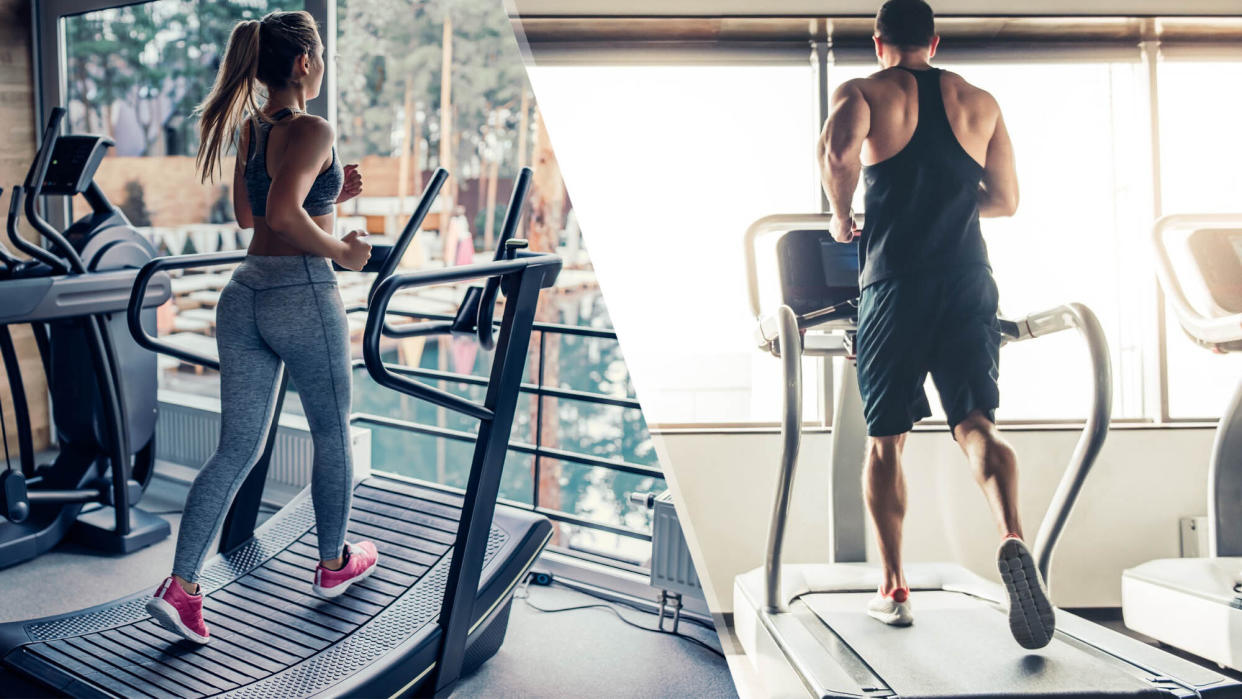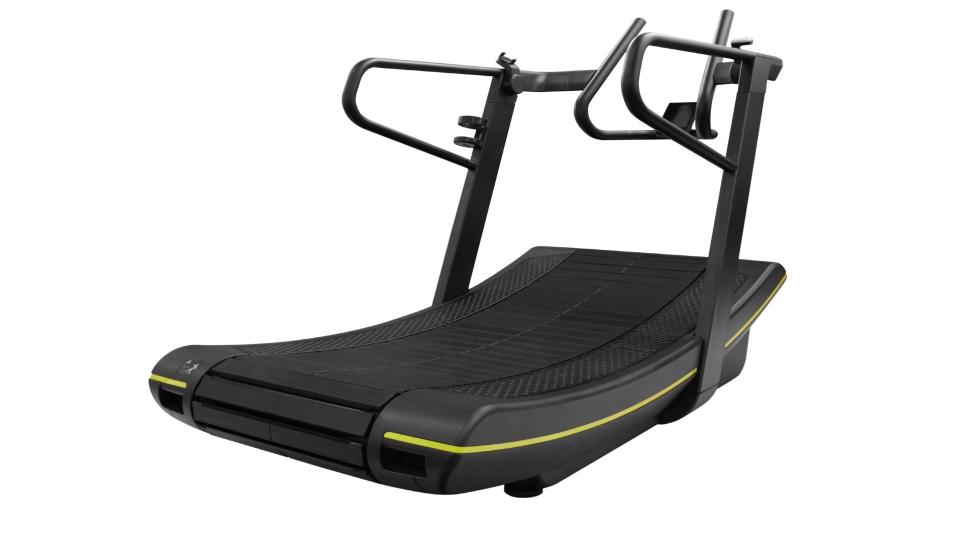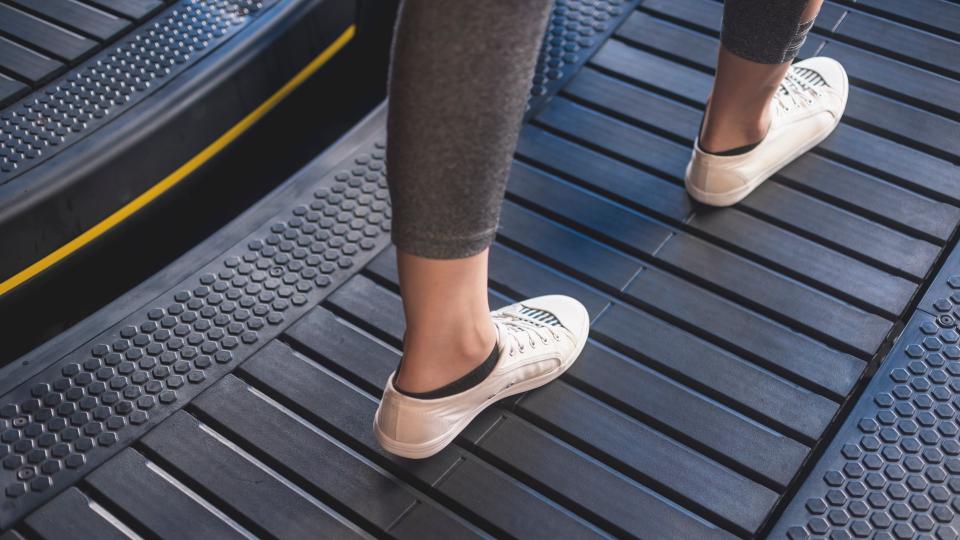Curved treadmills vs flat treadmills: Which burns more calories?

If you’ve seen a curved treadmill in the gym and wondered what it’s for, you’re not alone. Despite the strange design, it turns out this curved device has the potential to elevate your runs, but which treadmill burns more calories?
When pounding along on one of the best treadmills for indoor running and walking workouts, it seems like the features are becoming exhaustive — inclines, declines, parachute mode and sled push are just some ways treadmills make training even more challenging.
The curved treadmill is one of the latest in treadmill evolution, with a non-motorized belt that might leave some users unsure of how to use it. Below, we cover everything you need to know about curved treadmills versus flat treadmills and why using one could burn more calories and push your runs to new levels.
What is a curved treadmill?

The curved treadmill’s unique arc shape supposedly mimics a more natural footstrike during runs and walks. The gentle belt curve rises at the front and back, allowing your footstrike to pull the treadmill down and backward so that your body weight can drive movement without a motor.
Yep, you’re doing all the hard work, which takes more energy and muscle power than running or walking on a flat motorized treadmill. In theory, you can propel yourself at your leisure, but building momentum for sustained periods takes some doing.
And plenty of popular treadmill brands are jumping on the bandwagon, including Technogym and AirRunner. But are they worth the money or just another fitness fad?
Curved treadmill vs flat treadmill: pros and cons
Before opting for one over the other, there are a few health pros and cons to using a curved tread over a standard flat treadmill.

Impact
Firstly, curved treadmills were designed to encourage a more natural gait, running toward the balls of your feet rather than leading with a heel strike; this positioning could reduce the load on your joints that results from pounding down vertically on a flat surface and mimics outdoor terrain more closely.
The arc could also help activate posterior chain muscles, including the glutes, hamstrings and calf muscles at the back of the body, which many flat-surface runners struggle to activate properly.
Pace
The closer to the top of the curve you run, the faster you’ll be able to drive the belt by pushing down and pulling back with your foot, allowing you to set the pace. This has also proved helpful for monitoring self-pacing and fatigue in athletes during testing, as there’s nowhere to hide when you’re the one driving movement.
Curved treadmills don’t have a minimum or maximum pace — that is entirely set by you — which means anyone can use one without worrying about whether there are enough speed options available.
That said, for anyone who enjoys a walking workout, the best under-desk treadmills are great for consistency and leisurely strolls if you plan to clock up the steps while your mind is busy elsewhere.
Muscle activation
We know that whether you’re running on a treadmill vs running outside, this exercise form activates various major muscle groups, strengthens joints and bones and builds aerobic and anaerobic endurance.
Running on a curved treadmill requires your core and lower body muscles to fire together to produce enough power to move the belt, and some create more friction than others. Either way, your core muscles, lower back, arms, hip flexors, glutes, quads, hamstrings and calves are working hard to move the belt beneath you, which is more metabolically demanding.

Despite this, many users prefer ground or flat treadmill running to achieve a more consistent pace without losing momentum or thinking about what their body is doing.
One study looked into the effects of the incline curve on muscles and its impact on the forward-leaning position of your body. Interestingly, the results showed greater hamstring and less quad activation during motorized treadmill training and vice versa during non-motorized treadmill exercise.
Despite logic suggesting that a greater pull on each step would activate hamstrings more, researchers concluded that the results might be due to the incline curve, which requires more hip flexion as the foot strikes down and greater hip extension during toe-off.
Curved treadmill vs flat treadmill: Which burns more calories?
With the high-intensity nature of moving yourself, it’s thought that curved treadmills could burn more calories than flat treadmills and provide a tougher and more efficient workout in less time. But what does the research say?
A study published by ProQuest states that manufacturers believe exercising on a curved treadmill could burn 30% more calories than flat motorized treadmills. Researchers in this study found increased aerobic capacity and calorie expenditure in female athletes performing curved tread running versus motorized.
Another study conducted at Eastern Washington University tested participants walking for 10 minutes at 3 miles per hour on a curved and motorized treadmill. Results found a significant increase in calorie burn and RPE (rate of perceived exertion) for those walking on curved treads versus non.
And research on male runners found that curved treadmills elicited higher heart rates, VO2 max (oxygen uptake during exercise), RPE and cadence rate. It concluded that curved treadmill running demands more on a physiological and perceptual level, but this also showed a less efficient running economy.
Curved treadmill vs flat treadmill: Verdict
Current research indicates that curved tread training could be more physically demanding and offer a potentially higher calorie burn. However, most of the existing research out there is limited in some way, whether during testing or in reporting the results.
And although there’s support for curved treadmills over flat and motorized versions, from a biomechanical and athleticism standpoint, there’s not enough conclusive evidence to say either way.
That said, it depends on what you use your treadmill for. Economically, curved treadmills don’t require electricity to run, and they could provide a more natural feel and high-intensity workout in a shorter period.
But without a motor, although you can begin sprint intervals immediately, you'll struggle to accelerate, so achieving initial power output is difficult (despite there being no max speed). The friction will help you work on consistency, but if your goal involves sprint starts and acceleration, rehab or flat runs, you might prefer outdoor or motorized training.
Either way, any treadmill is beneficial for improving conditioning, which is suited to most athletes or runners working on their cardiovascular fitness.


